What is the book `` Algorithmic beauty of plants '' that simulates the growth system of plants and reflects it in 3D modeling?

' The Algorithmic Beauty of Plants ' is a book written by Polish computer scientist Przemyslaw Prusinkiewicz and Hungarian biologist Aristid Lindenmeyer. It is known as the first comprehensive book to use computer simulations to analyze specific patterns in plant development and growth processes. Since the first edition was published in 1990, it has been repeatedly cited as a paper, and there are also multiple efforts to reproduce the algorithmic beauty of plants introduced in this book in actual programs.
(PDF file) The Algorithmic Beauty of Plants
001
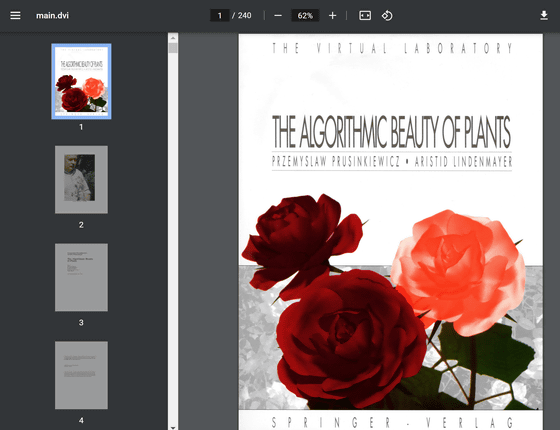
Algorithmic Botany: Publications
http://algorithmicbotany.org/papers/

The Algorithmic Beauty of Plants [pdf] | Hacker News
https://news.ycombinator.com/item?id=36853206
'The Algorithmic Beauty of Plants' is regarded as the first book that applies algorithms that can describe and express the structure of various natural objects, including the growth process of plants, to fictional plant modeling. Such an algorithm is called the 'Lindenmeyer system' or ' L system ' after the name of the author, Lindenmeyer, and is used not only for describing the complex branching structure of natural objects, but also for the research of artificial life. It's helpful.
'The Algorithmic Beauty of Plants', first published in 1990, is no longer published. BMV Publications ' can be downloaded in PDF format. The book can be downloaded chapter by chapter, and the entire book can be downloaded in either a high quality version (about 17 megabytes) or a light version (about 4 megabytes). The book contains many diagrams, illustrations and 3D modeling examples, so it is recommended to read the high quality version whenever possible for a full understanding.

Chapter 1 of the book deals with 'Graphical modeling using L-systems', and the research theme is explained at the beginning. According to its content, the L-system was conceived as a mathematical theory of plant development, but originally focused on plant
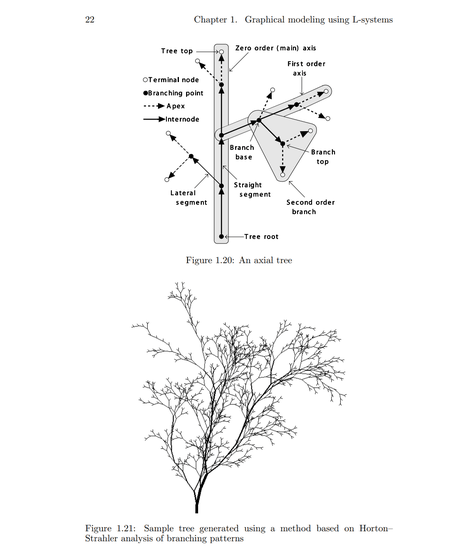
From chapter 2 onwards, you can see a practical modeling example using the L-system. Modeling here, for example, when drawing a branching tree, colors one triangular grid, then colors the vertex cells obtained from the simulation of the algorithm, and repeats this process to create branches. constitutes the growth and branching pattern of

In Chapter 4,
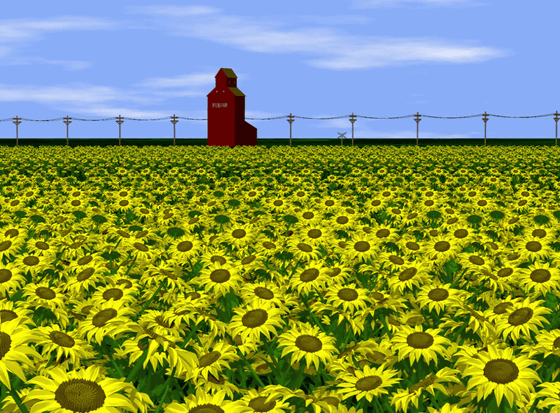
Regarding the 'algorithmic beauty of plants', the L-system provides a good understanding of the L-system using concrete plant modeling, and the 3D modeling of plants is theoretically real rather than just cosmetic. It is also highly evaluated for its ability to create something unique. On the other hand, Carl J. Nicklaus, professor emeritus in the Department of Integrative Plant Sciences at Cornell University, said, 'This book is for graphic artists who want to create cyber plants that grow and sway in the wind in a more realistic way. I think it will be enjoyable for those who want to understand patterns in , but the book falls short on the task of understanding plant morphology from
However, as the first book to explain the algorithms behind modeling fictitious plants, there are many voices that evaluate `` Algorithmic beauty of plants '', and the social news site Hacker News comments from people who were influenced by the book have been submitted multiple times. A user has created all the diagrams in a program using Microsoft's F# according to the contents of the book and published them on GitHub .
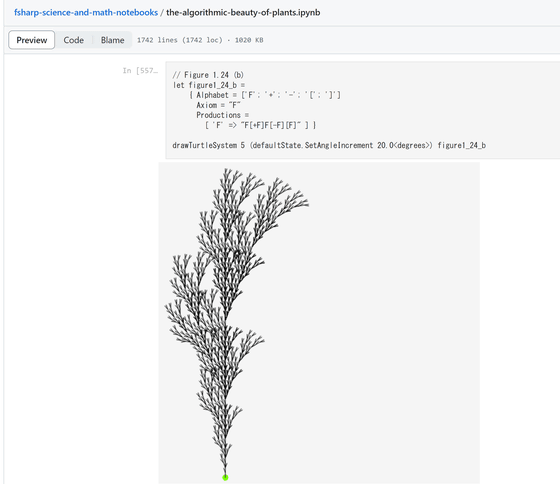
Also, Janet E. Kubler's '
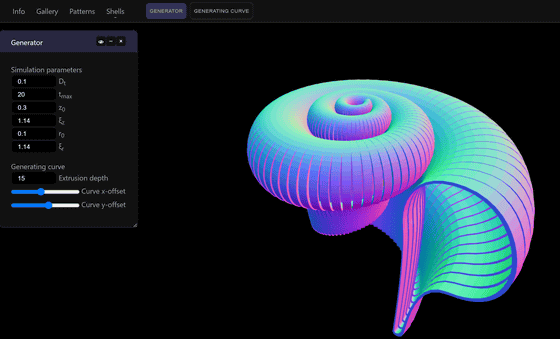
Related Posts:
in Science, Posted by log1e_dh







